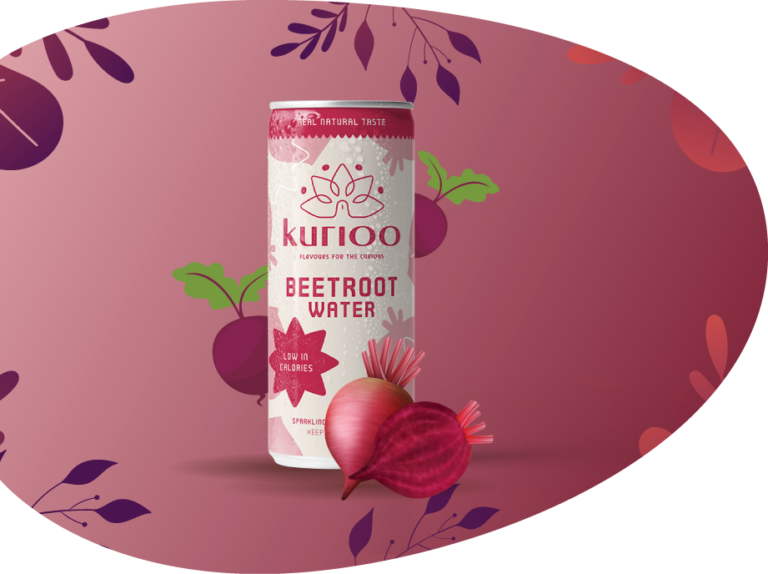
TRADITIONAL INDIAN SYRUPS …
In South-Asian countries (India, Pakistan etc…), where temperatures can rise up to over 50° Celsius in summer, local communities turn to homemade flavored water for refreshment. Inspired by herbal pharmacopeia, which has a history of almost 1000 years, locals mix up their water with natural Indian syrups, to spice up their drink and quench their thirst.
THE INDIAN PEAFOWL,THE NATIONAL BIRD OF INDIA.
Proud of our roots, we chose the Indian Peafowl as our mascot. With its colorful feathers and spectacular bronze-green tail, the peacock represents the vivid Indian culture and its daring flavors. Known as a curious animal, the peacock is the perfect companion for exploring new tastes.
CURIOUS?
DISCOVER OUR PRODUCTS
The beetroot is the taproot portion of a beet plant, usually known as beets in Canada and the United States. At the same time, the vegetable is referred to as beetroot in British English and is also known as the table beet, garden beet, red beet, dinner beet or golden beet.
It is one of several cultivated varieties of Beta vulgaris grown for their edible taproots and leaves (called beet greens); they have been classified as B. vulgaris subsp. vulgaris Conditiva Group.
Other cultivars of the same species include the sugar beet, the leaf vegetable known as chard or spinach beet, and mangelwurzel, a fodder crop. Three subspecies are typically recognized.
Etymology
Beta is the ancient Latin name for beets, possibly of Celtic origin, becoming bete in Old English. Root derives from the late Old English rōt, itself from Old Norse rót.
History
Beets were domesticated in the ancient Middle East, primarily for their greens, and were grown by the Ancient Egyptians, Greeks and Romans. By the Roman era, it is thought that they were cultivated for their roots as well. From the Middle Ages, beetroot was used as a treatment for a variety of conditions, especially illnesses relating to digestion and the blood. Bartolomeo Platina recommended taking beetroot with garlic to nullify the effects of “garlic-breath”.
During the middle of the 19th century, wine often was coloured with beetroot juice. Usually the deep purple roots of beets are eaten boiled, roasted, or raw, and either alone or combined with any salad vegetable.
A large proportion of the commercial production is processed into boiled and sterilized beets or pickles. In Eastern Europe, beet soup, such as borscht, is common.
In Indian cuisine, chopped, cooked, spiced beet is a common side dish. Yellow-coloured beetroots are grown on a very small scale for home consumption.
The green, leafy portion of the beet is also edible. The young leaves can be added raw to salads, whilst the mature leaves are most commonly served boiled or steamed, in which case they have a taste and texture similar to spinach.
Yellow beetroot
The domestication of beets can be traced to the emergence of an allele that enables the biennial harvesting of leaves and taproot.
Beetroot can be roasted, boiled or steamed, peeled, and then eaten warm with or without butter as a delicacy; cooked, pickled, and then eaten cold as a condiment; or peeled, shredded raw, and then eaten as a salad. Pickled beets are a traditional food in many countries.
A traditional Pennsylvania Dutch dish is pickled beet egg. Hard-boiled eggs are refrigerated in the liquid left over from pickling beets and allowed to marinate until the eggs turn a deep pink-red colour.
In Poland and Ukraine, beet is combined with horseradish to form ćwikła or бурачки (burachky), which is traditionally used with cold cuts and sandwiches, but often also added to a meal consisting of meat and potatoes.
Similarly, beetroot (referred to by the local name cvekla) is used as winter salad, seasoned with salt and vinegar, with meat dishes in Serbia.
As an addition to horseradish, it is also used to produce the “red” variety of chrain, a condiment in Ashkenazi Jewish, Hungarian, Polish, Lithuanian, Russian, and Ukrainian cuisine.
Commonly used in Australian hamburgers, a slice of pickled beetroot is combined with grilled pineapple, cooked onion, fried egg on a beef patty to make an “Aussie burger”.
In Sweden and elsewhere in the Nordic countries, a typical dish is Biff à la Lindström, a variant of meatballs or burgers, with chopped or grated beetroot added to the minced meat.
In Northern Germany, beetroot is mashed with Labskaus or added as its side order.
When beet juice is used, it is most stable in foods with a low water content, such as frozen novelties and fruit fillings.
Betanins, obtained from the roots, are used industrially as red food colourants, e.g. to intensify tomato paste, sauces, desserts, jams and jellies, ice cream, sweets, and breakfast cereals. Beetroot can also be used to make wine.
Preliminary research
In preliminary research, beetroot juice reduced blood pressure in hypertensive people. Tentative evidence has found that dietary nitrate supplementation, such as from beets and other vegetables, results in a small improvement in endurance exercise performance.
